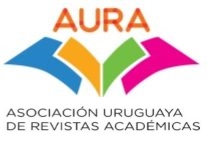Bovine abortion
casuistry and optimization of the diagnosis in the DILAVE "Miguel C. Rubino", Uruguay
Keywords:
Abortion, Bovine, Etiology, Diagnosis, UruguayAbstract
This paper presents the diagnosis of bovine aborted fetuses submitted during 1996/2002 to the DILAVE "Miguel C. Rubino" main laboratory. A total of 255 fetuses were studied by means of histopathological, bacteriological and serological tests. During a first period from 1996 to 1998, 51 fetuses were studied and an etiological diagnosis was obtained in the 50.9% of those fetuses: 43.1%bacteriological, 5.9% viral, and 1.9% fungal etiology. During this first period 49.1% if the abortions submitted remained undiagnosed. In 1998 the decision of improving the diagnosis of the submitted fetuses was taken; changes in the working protocol were done, as well as new diagnostic techniques were included. Since January 1999 immunohistochemical (IHC) techniques for detectionof N. caninum and Bovine Viral Diarrhea antigens as well as an indirect fluorescense antibody test (IFAT) and ELISA test for N. caninum became available at the Laboratory. During a second period from 1999 to 2002, 204 fetuses were studied and an etiological diagnosis was obtained in the 61.8% of the fetuses: 38.2% bacteriological, 0.5% fungal, 1% viral and 22% parasitic etiology (N. caninum). During this second period 38.2% of the abortions remained undiagnosed.











